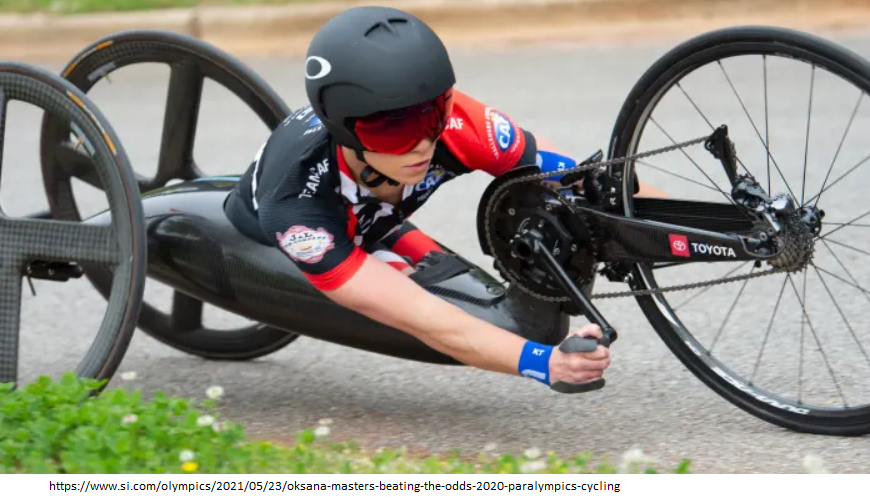
Watching the Olympics and Paralympics has gotten me fired up about upper body training. There are multiple sports like kayaking, canoeing, and rowing in the Olympics that require “upper body cardio”. Rowers will say the power from the stroke is mostly from the legs but it’s still a good upper body workout too. In the summer Paralympics there are sports like wheelchair racing and handcycling that also use a lot of upper body cardio. All the athletes in these sports are lean and have good muscular definition without being “bulky”. It was inspiring to watch them perform at their world-class best.

Recently I also read the book The Purposeful Primitive by Marty Gallagher, who has both competed and coached in powerlifting for many years. He has a lot of advice about strength training, and fascinating behind the scenes stories about top lifters. But even if strength training is your primary goal, he also believes cardio is an important adjunct activity, both for health and staying lean. He coined the phrase “hybrid cardio”, where you use strength training-like movements but do a lot more reps to get your heart rate up, and also build strength endurance. It was interesting that his favorite cardio expert is the late Dr. Leonard Schwartz, the inventor of “Heavyhands” training. Marty feels, as I do, that a lot of innovations by Dr. Schwartz are not as well known as they should be. Heavyhands is a perfect example of a hybrid cardio approach. This is becoming more widely accepted now, for example in Crossfit metabolic conditioning (“metcon”) workouts.
Dr. Schwartz believed you could build adequate strength for activities of daily living doing just Heavyhands. It certainly worked for him, judging by the picture on the book cover below, taken when he was in his sixties. I’ve never given this a try, I’ve always “hedged my bet” by also throwing in conventional strength training.
Coming at it from another angle, the famous strength training mogul Bob Hoffman wrote a book called Functional Isometric Contraction in which he claimed that adequate strength can be gained by doing Isometrics alone. He thought you should supplement it, however, by taking muscles through their full range of motion when practicing “your chosen sport”. The problem with that is that your sport may not emphasize all the muscles that are important for healthy aging. For example, in my case my favorite sports are hiking and biking. I can do some isometric exercises for my legs, and supplement that with hiking and biking. But that wouldn’t be taking my upper body muscles through their range of motion. I can partially address that by doing more upper body oriented sports like cross country skiing, kayaking, and canoeing, or simulating them in the off season with resistance bands. But I can also get the equivalent benefit from Heavyhands exercises such as walking with hand weights.
I’ve decided to give this approach a try for a couple of months and see how it goes. I’ll do just four basic upper body isometric stations with resistance bands (chest press, row, overhead press, pulldown). That is a very quick workout. Then I’ll skip conventional strength training and do “hybrid cardio” with my kayak and canoe simulators plus Heavyhands walking and walking with poles.

I recently rediscovered a chapter in Dr. Schwartz’s book Heavyhands Walking called “strength walking”. This describes interval-type movements, working up to heavier hand weights, and making sure you do it vigorously enough to keep your heart rate up. I’ll give that a try. There are a couple of caveats. Dr Schwartz did not recommend this for beginners, he thought it might lead to injury. Instead, you should start with lighter weights and build up your stamina before bumping up the weights. Secondly, a lot of heart rate monitors are now wrist based, and the measurement can be less accurate if you are vigorously moving your arms. That has been my experience on more than one brand, including Fitbit and Garmin. It is better for this purpose to measure your heart rate with a chest strap like the ones from Polar.
Published
September 22, 2021September 21, 2021



